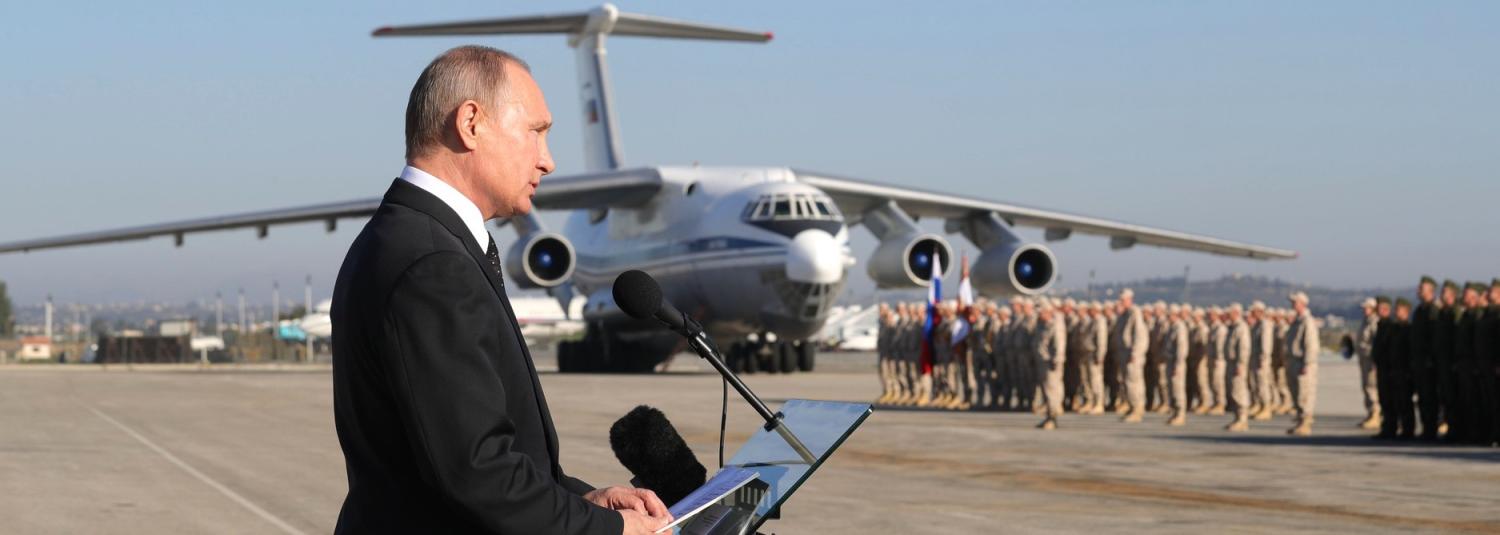Russian President Vladimir Putin was reported this week to have ordered Russian military chiefs to redeploy ‘most’ of Russia’s Syria contingent back home. Exactly what constitutes ‘most', though, is anyone’s guess.
There are reports that Russia would redeploy 23 warplanes, two helicopter gunships and some special forces, military police and combat engineers. Importantly, no timeframe is given and, at the same time, Putin announced that Russia’s airbase and its naval base at Tartous would remain as permanent fixtures.
So what does this all mean? Essentially, it’s not a withdrawal. The naval and air base require significant force elements to protect and operate. And there will be an ongoing Russian requirement to advise and assist Syrian forces that pre-dates the war, as well as a need to monitor and verify the ‘de-escalation’ zones that have been negotiated. So while some Russian forces will return home, it is only too easy to hide overall force levels by highlighting outgoing units while remaining silent about incoming units.
Retaining a naval and air base in the west of the country allows these deployments to be made without relying on Syrian facilities. No military likes to make its troop levels public, and even when troop levels are set, the constant flow of people in and out of theatre make force totals a daily moving feast, between leave, temporary duty assignments, casualties or limited operational increases. You can hide lots of personnel just in the daily comings and goings of personnel on operations.
If the equipment redeployment is to be believed, Russia will still have substantial air assets available. A report from July counted 33 Russian fighter aircraft at the airbase. This was simply a single photo from one day, but it is reasonable to assume that some ground-attack or even air-defence aircraft would remain, particularly if coalition aircraft still operate over Syria. And there would certainly be more than two helicopter gunships in theatre, so withdrawing two is not decisive.
Putin is likely motivated by one or a combination of reasons. Having just announced his run for another term as president in next year’s election, declaring victory and saying the troops can come home made for a good way to reinforce his image as a man of international influence. Not that there is any realistic chance he will lose the election, but it always helps to reinforce the notion of decisive leadership on the world stage.
Putin also sought to head off criticism that he has committed Russia to a never-ending Syrian quagmire. Announcing a redeployment sends a signal to the Syrian opposition and others that Moscow considers the military phase of the Syrian civil war largely over and that now is the time for negotiations under Russian guidance (but UN auspices – Putin needs UN sign-off if he and his allies hope to access international reconstruction funds).
Lastly, it sends a good signal to Syria’s Bashar al-Assad, that if he demands too much in future negotiations and jeopardises Russian strategic aims, Moscow can always pull out its troops for real.
So while there may be less than meets the eye regarding the announcement of the Russian ‘withdrawal’ from Syria, it still serves a purpose for Putin both domestically and internationally.

